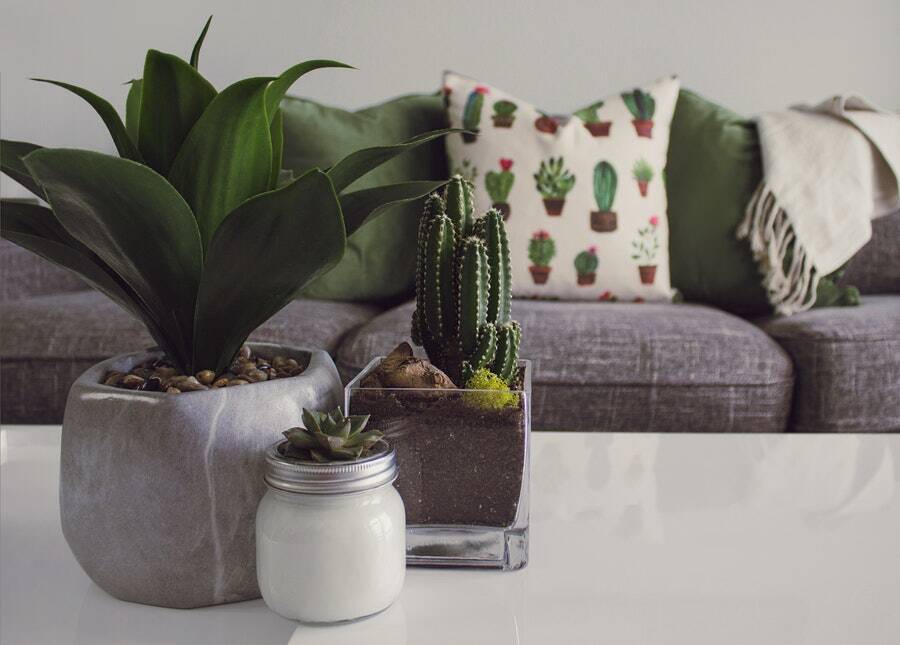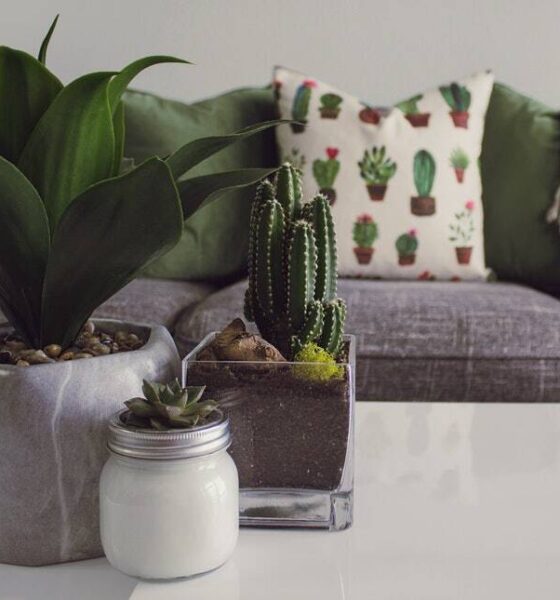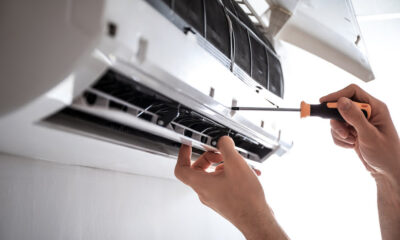Energy efficiency and air quality have a curious relationship. You might’ve taken steps to ensure your home is sealed and secure, perfectly insulated to reduce excess expenditures and emissions. In making these adjustments, however, you might have missed out on the chance to improve air quality. The reduced air flow in your home prevents energy waste, but may affect your day-to-day living experience.
That’s no reason to change the elements of your home that make it energy efficient. But it should serve as an excellent reason to research products and techniques that improve air quality. In this article, we’ll detail six ways you can breathe a little easier — a few fixes anyone with stale air can implement.
1. Purchase an Air Cleaner
Through much of the year, pollen, dust mites, mold spores and pet dander cause irritation to those with sensitive allergies. In cold weather, they can’t open a window to circulate the particles, but they have another solution in the form of air cleaners. These devices come in a variety of sizes at a wide range of prices.
Depending on your budget, you can purchase a lightweight tabletop model or a more expensive system that cleans your entire house. Though they don’t remove gaseous pollutants and aren’t always effective against strong sources of allergens, homeowners like you can use them in conjunction with other methods recommended by the EPA.
2. Perform Household Maintenance
An air cleaner is only half the battle. If you learn to identify and manage the pollutants in your home, you can attend to them with greater efficiency. Through regular household maintenance, you’ll ensure dust, mold and particles won’t build up and harm the quality of the air in your living space.
All it takes is a few simple changes to make a significant difference. If you have an animal like a cat or dog and groom them indoors, try brushing their fur outdoors to reduce pet dander and shedding. You should also take care not to overwater houseplants, as overly damp soil can foster allergens.
3. Use Non-Allergenic Building Materials
Professional renovators and construction firms can integrate non-allergenic materials into design plans. With an alteration in the infrastructure of your home, you’ll likely see a major improvement in its air quality. These modifications don’t have to put a strain on your budget, and many of them improve the value of a property.
Hardwood flooring has a timeless aesthetic that coordinates with almost any decor, and more than that, it doesn’t harbor dust mites or mold. It protects against the accumulation of harmful substances that gather on other flooring materials. Similarly, kitchen updates like wood cabinets and countertops built from natural materials also help improve air quality in a home. If you can swing natural building materials now, they’ll boost your home health and resale value down the road.
4. Remove Artificial Fragrances
While certain products “freshen” the air, they often release particles that do the opposite. Many cleaning solutions and artificial fragrances contain volatile organic compounds which may pose a health risk to sensitive individuals, and these items often appear harmless. Even a candle can adversely affect air quality.
You can substitute candles and air fresheners with aromatic plants which serve the same purpose. They’re a natural replacement that adds to the mood of a living space while reducing indoor pollution. Research has shown these plants have the potential to lessen volatile organic compounds like ammonia and formaldehyde.
5. Replace Ozone Filters
If you presently use ozone filters in your home, you should consider searching for an alternative. Whether it’s a byproduct of their design or an intentional function, air cleaners that emit the gas can damage your respiratory system. A purification system that works without ozone is a smart investment.
You have a broad selection of brands to choose from when determining a better air cleaner. A quick search online will yield multiple results. Before you make the switch, look into your current purification system to check if it emits ozone, and if it does, find a more recent model that doesn’t have the same problem.
6. Assess and Address
Homeowners intent on maintaining good air quality within their living space should regularly observe its condition. You can use an air quality monitor to check for volatile organic compounds and particle matter, then determine the best way to approach the problem. Diligence helps in preserving air quality.
With a monitoring device, move from room to room in your house. If the monitor records a high level of particle matter or volatile organic compounds, find the source of the pollutants and assess them. Through the use of this technology, you’ll learn to survey and manage the areas in your home that are susceptible to dust and irritants.
Small Changes Can Improve Air Quality
The air inside a home should be healthy year-round. You don’t have to compromise its quality in the pursuit of energy efficiency, and the products and methods in this article will lead you in the proper direction. Free of particles and pollutants and volatile organic compounds, your lungs will surely thank you.
If you want to improve air quality in a green home, take a deep breath and start small. Buy a plant and place your candles in a cupboard. Even a tiny step is forward progress.


 Environment10 months ago
Environment10 months agoAre Polymer Banknotes: an Eco-Friendly Trend or a Groundswell?

 Environment11 months ago
Environment11 months agoEco-Friendly Home Improvements: Top 7 Upgrades for 2025

 Features9 months ago
Features9 months agoEco-Friendly Cryptocurrencies: Sustainable Investment Choices

 Features10 months ago
Features10 months agoEco-Friendly Crypto Traders Must Find the Right Exchange































